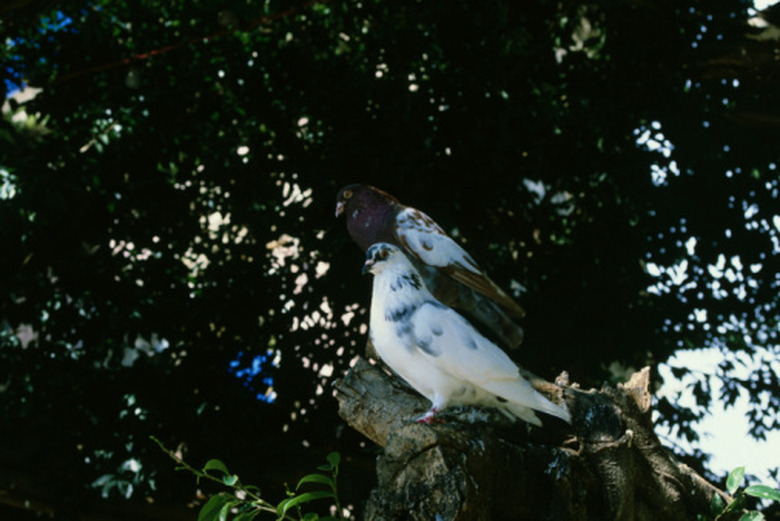How To Teach Your Dove To Do Stuff On Command
Tip
As do all birds, doves need enough room to move around, roost and comfortably exercise. They should be allowed free indoor flight every day. The minimum recommended cage size is 3 by 4 by 6 feet. Make sure they always have plenty of water and at least two natural types of perches of varying heights and sizes
White homing pigeons are easier to train than doves.
Warning
Don't overwork doves. They tire easily. If they are continually trying to land while you are training them, they are probably exhausted. Train them in a well-ventilated area in a cool temperature.
Create a safe place for your doves where they will be protected, yet have a comfortable, well-ventilated environment. Do not let them outside alone. They are unable to fly more than a few feet at a time. They cannot fend for themselves and can become easy prey for cats, foxes, dogs and other animals.
Doves and pigeons have been domesticated pets for thousands of years. The difference between doves and pigeons is mostly in the size. Doves are typically smaller and sleeker with pointed tails. Pigeons are larger and stouter with rounded tails. The common pigeon is known as a rock dove. Training doves takes a lot of time. If your goal is to train a carrier or a racer, a white homing pigeon is a better choice of bird. The most common doves selected as pets are ring-neck and diamond doves. A well-cared-for bird will respond accordingly.
Step 1
Get to know your dove. This is often referred to as body handling. Spend time with your bird. Be gentle and patient. Gently lift its wings and play with its feet. Pet the bird as often as possible to let it become familiar and comfortable with being held. Show attention and love. No bird or animal desires to learn out of fear. These birds are affectionate and are happiest and respond best when they are treated kindly and have other doves around them.
Step 2
Reward your birds with small whole seed treats such as millet, canary grass, wheat and cracked corn as you work with them. You are teaching a form of operant conditioning where the dove will learn that performing certain actions will result in being fed special treats. Observing the doves' body language and becoming accustomed to their preferences will help you respond to them in a way that results in better communication.
Step 3
Use your whistling to teach them to return to or to sit on your shoulder. As they learn the sound of your specific whistle, they will respond. Small bird whistle mouthpieces are available that help you mimic the bird's own whistle.
Step 4
When training doves to return to their perch, place a stuffed white sock on the perch to draw their attention to the perch. They want to recognize where they are going to land. Release them over and over again from a very short distance to the perch to help them understand what you are trying to get them to do. It can be more of a challenge to train a dove to return home because it does not have the natural homing instinct that a pigeon has.
